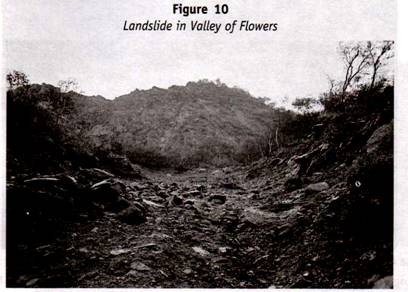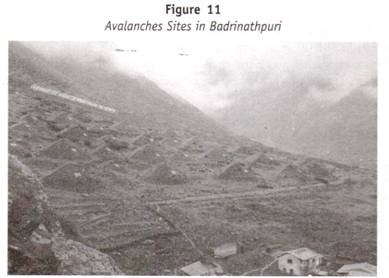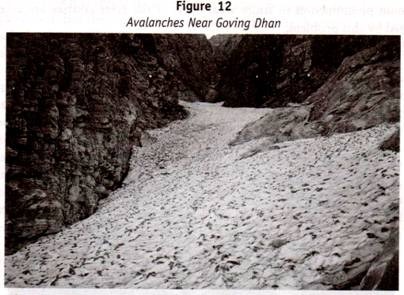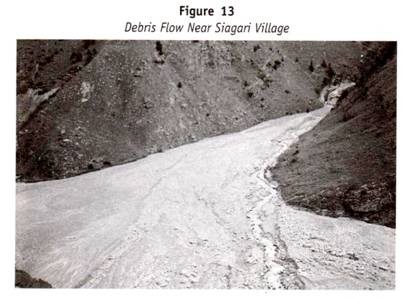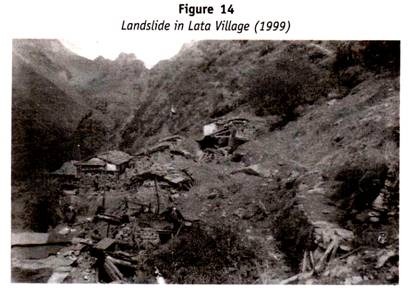Let us learn about Morphology and Ultrastructure of a Bacterial Cell. After reading this article you will lean about: 1. Size of a Bacterial Cell 2. Shape and Arrangement of Bacterial Cell 3. Ultra-structure of Bacterial Cell 4. Structures Outside the Cell Membrane 5. Structure of Cell Membrane 6. Cell Envelope of Prokaryote 7. Bacterial Cell Wall: Peptidoglycan Component and Other Details.
Contents
- Size of a Bacterial Cell:
- Shape and Arrangement of Bacterial Cell:
- Ultra-Structure of Bacterial Cell:
- Structures Outside the Cell Membrane:
- Structure of Cell Membrane:
- Cell Envelope of Prokaryote:
- Bacterial Cell Wall: Peptidoglycan Component:
- Diversity of Peptidoglycon:
- Teichoic Acids:
- Protoplast Formation:
- Pseudopeptidoglycan and other Cell Walls of Archae Bacteria:
- Outer Membrane of Gram Negative Bacteria:
- Porins:
- Transpeptidation:
Size of a Bacterial Cell:
There are great variations in size of bacteria. They measure from 0.75 µ to 1.5 µ but on an average each cell of bacterium measures about 1.25 µ to 2 µ (a in diameter. Some times their size varies due to slide preparation.
The smallest rod shaped eubacteria is Dialister Pneum osintes and measures between 0.15 µm to 3.0 µm size. Sulphur bacteria, Thiophysa volutans has diameter of about 18 µm and is considered as largest amongst all bacteria.
Bacteria are so minute that a single drop of water may contain about billions of bacteria.
Shape and Arrangement of Bacterial Cell:
Bacterial cells exhibit greater variation in their shape but usually four conventional shapes of cell have been recognized (Fig. 12.1).
1. Cocci:
Simplest form of bacteria in which bacterium appears like a spherical cell.
(i) Micrococci:
When bacterium appears singly.
(ii) Diplococci:
When they appear in pairs of cells.
(iii) Streptococci:
When they appear in chain form.
(iv) Tetrad:
Arranged in square of four.
(v) Sarcinae:
When arranged in cuboidal or in different geometrical or packet arrangement.
(vi) Staphylococci:
Arranged in irregular clusters like bunch of grapes.
2. Rod Shaped:
They are also called bacilli and are commonest in microbial world.
They are of two kinds:
(i) Short rods:
Very short rods, occurring mostly singly.
(ii) Long rods:
Cylindrical shape, are known as Bacilli or rods, occurring singly, in pairs or in chains.
3. Vibrios:
They are curved rods or comma shaped, their curvature is always less than a half turn.
4. Spirilla:
They are curved or spiral shaped cells, their curvature exceeds that of a half turn. They may be classified as either spirilla or spirochetes.
Few bacteria actually are flate. For instance, Anthony E. Walsy has discovered square bacteria living in salt ponds. These bacteria are shaped like flate, square to rectangular box about 2 µm to 4 µm and only 0.27 µm thick.
However, some bacteria are variable in shape and have a single characteristic form. These are called Pleomorphic (corynbacterium, Arthrobacter).
Ultra-Structure of Bacterial Cell:
Examination of bacterial cells with electron microscope reveals various component structures. Some of these are outside the cell membrane; others are internal to cell membrane (Fig. 12.2).
Structures Outside the Cell Membrane:
Capsule:
Some prokaryotic organisms secrete slimy or gumy materials (exopolymers) on their surface. A variety of these structures consist of polysaccharides and a few consist proteins. The more general term glycocalyx is also used.
The glycocalyx is defined as the polysaccharide containing material lined outside the cell. Composition of these layers varies in different organisms but can contain glycoprotein and different polysaccharides including polyalcohol and amino sugars.
These layers may be thick, or thin, and rigid or flexible, depending on heir chemical nature in specific organism. The rigid layers are organized in a tight matrix that excludes Indian ink, this form is referred to Capsule.
Most bacterial capsules are composed of polysaccharides. Capsules composed of single kind of sugar are termed homopolysaccharides; are usually synthesized outside the cell from disaccharides by exocellular enzyme. The synthesis of glucan from sucrose by S. mutans. other capsules are composed of several types of sugar and are termed as heteropolysaccharides, for example, capsule of Klebsiella pneumoniae.
A few capsules are polypeptides. For example B. anthracis, is composed entirely of a polymer of glutamic acids.
Functions of Capsule:
Capsule is not essential for survival of organism under favourable growth conditions. It, however, provides protection in unfavourable environments. Presence of capsules is of importance in disease causing ability of some bacteria. The non-capsulated strains of Pneumococcus are destroyed by host phagocytes and are therefore not effective.
The incapsulated strains of the bacterium are protected from phagocytosis and take part in virulence in addition because outer polysaccharide layer bounds a significant amount of water so it is resistant to desiccation.
Flagella:
Most motile procaryotes move by use of flagella thread like locomotor appendages, extending outwards from the cell membrane and cell wall.
Bacterial flagella are slender, rigid structures, about 20 nm across and up-to 15 to 20 µ m long. Flagella are so thin that they cannot be observed directly with bright field microscope. But must be stained with special techniques designed to increase their thickness.
Bacteria species often differ distinctively in their patterns of flagella distribution and these patterns are useful in identifying bacteria. Monotrichous bacteria have one polar flagellum; (fig. 12.3a). Amphitrichous bacteria have either singe or duster of flagellum at both (fig. 12.3b) pole.
In contrast, Lophotrichous bacteria, have a cluster of flageila at one ends (fig. 12.3c). Bacteria surrounded by lateral flageila are Peritrichou (fig. 12.3d).
Flagellar Ultra-Structure:
Transmission electron microscope studies have shown that flagellar apparatus is made up of three distinct regions:
(1) The outermost region is filament which is extended from the cell surface to tips.
(2) Basal bodies consist of small central rods inserted into cells
(3) A short curved segment, the flagellar hook fig. 12.4 , links the filament to basal bodies and acts as flexible coupling.
The filament is a hollow, rigid cylinder made up of protein subunits flagellin which ranges in molecular weight from 30,000 Dalton to 6,000 dalton, depending on the bacterial species.
Hook and basal bodies are quite different from filaments. Basal body is more complex part of flagellum. In E. coli and most Gram-negative bacteria, basal bodies bear 2 pairs of ring, outer pair (L and P ring) is situated at the level of outer membrane and inner pair (S and M ring) is located near the level of cell membrane.
The outer L and P ring associates with lipopolysaccharides and peptidoglycan layer respectively. Inner M ring contacts the plasma membrane while S ring lies just above attached to inner surface of peptidoglycon,. Flageila of Gram-positive bacteria have only lower S and M ring.
Fimbriae or Pili:
Some bacteria mostly (Gram negative bacilli) contain, non-flagellar, extremely fine appendages called fimbrial or pile. The filament of pilus is straight and diameter is 7 n m. It is made up of pilin protein. Molecular weight is 17,000.
Pili are nonmotiie but adhesive structure. They enable the bacteria to stick firmly to other bacteria, to a surface or to some eucaryotic such as mould plants, plants and animal cells including R.B.C and epithelial cells of elementary, respiratory and urinary tracts.
Pilli help in conjugation (e.q. F. pili or sex pili) of male bacteria, in the attachment of pathogenic bacteria to their host cell. Pile are known to be coded by the genes of plasmid that determine cell capacity to carry out conjugative genetic exchange with other cells.
Spinae:
Some Gram-positive bacteria have tubular unicellular and rigid appendage of singe protein moity called spinae. They are known to help the bacterial ceil to tolerate some environmental conditions such as salinity, pH and temperature etc.
Structure of Cell Membrane:
Cell membrane is a thin structure that completely surrounds the cell only about 8 nm thick. This structure is critical barrier separating the inside of cell from environment. The cell membrane is also highly selective barrier enabling the cell to concentrate a specific metabolite and excrete waste material.
Mostly biological membrane is composed primarily of Phospholipids (about 20 to 30 percent) and proteins (about 60 to 70 percent). The phospholipids form a bilayer in which most of the proteins are strongly held (integral proteins) and these proteins can be removed only by destruction of the membranes, as with treatment by detergents.
Other proteins are only loosely attached (Peripheral proteins) can be removed by mild treatment such as osmotic shock. The lipid matrix of membrane has fluidity, allowing the components to move around laterally. Fluidity is essential for various membrane functions and is dependent on factors such as temperature and on proportion of unsaturated fatty acids to saturated fatty acids present in phospholipids. (Fig. 12.5).
One major difference in chemical composition of membrane between eukaryotic cells and prokaryotic cells is that eukaryotes have sterol in their membrane depending on cell type, sterol can make up from 5-25% of total lipid of eukaryotic membrane. Sterols are absent from membranes of all prokaryotic cells (methanotropns are major exception). Sterol are rigid, planner molecules, whereas fatty acids are flexible.
The association of sterol with membrane serves to stabilize its structure and make it less flexible. Membrane rigidity may be necessary in eucaryotes because many of them lack a rigid cell wall. Rigid structure provides stability to the cell.
Molecules similar to sterol called Hopanoid, are present in several bacteria and may play role similar to that of sterol in eukaryotic cell.
A significant difference exists between the phospholipids of eubacteria and those of archaebacteria. In eubacteria the phospholipids are phosphoglycerides in which straight chain fatty acids acids are ester linked to glycerole (Fig. 12.6a). In archaebacteria, the lipids are polyisoprenoid branched chain lipids, in which long chain branched alcohol (Phytanols) are ether linked to glycerol (Fig. 12.6b).
Cell Envelope of Prokaryote:
Bacteria can be divided into two major groups called gram positive bacteria and Gram negative bacteria, based on Gram stain. Gram positive bacteria and Gram negative bacteria differ in the appearance of cell wall. The cell wall of Gram negative bacteria is multilayered structure and quite complex whereas Gram positive bacteria contain primarily single type of molecule and is often much thicker (Fig. 12.7).
Bacterial Cell Wall: Peptidoglycan Component:
In the cell wall of bacteria, there is one rigid layer that is primarily responsible for strength of the wall. In Gram negative bacteria addition layer is present outside this rigid layer. The rigid layer of both Gram negative bacteria and Gram positive bacteria is very similar in chemical composition and is called Peptidoglycan (or murein).
This layer is thin sheet composed of two sugar derivatives, N-acetyl glucosamine and N-acetyl muramic acid and small number of amino acids consisting of L-alanine, D-alanine, D-Glutomic acid and either lysine or meso-diamino palmilic acid acid. These constituents are connected to form a repeating structure, glycan tetrapeptide.
Basic structure of peptidoglycan is a thin sheet in which the glycon chains formed by sugars are connected by peptide cross links formed by the amino acid. Glycosidic bonds connecting the sugars in the glycan chains are very strong but these chains alone cannot provide rigidity in all directions.
The full strength of amino acids reliazed only when these chains are cross-linked by amino acids. In Gram-negative bacteria cross linkage usually occurs by direct peptide linkage of the amino group of Diamino palmilic acid to the carboxyl group of the terminal D-alanine. In Gram positive bacteria cross linkage is usually by peptide inter bridge. The kinds and number of cross linking amino acids varies from organism to organism.
In Staphylococcus aureus the peptidoglycan is made up of linear glycon (Polysaccharide) Chains connected through short tetrapeptide and pentagiycine bridge. The polysaccharide chain consisting of alternate residues of the amino acid N-acetyl glucosamine (NAG) and N-acetyl muramic acid (NAM) linked in β-1, 4 glycosidie linkage.
Each NAM residue carries a short peptide chain of four amino acid residues (tetra peptide) which are L-alanine, D-Glutamic acid, L-Lysine and D-alanine.
Tetra peptide is unusual in that it contains D-amine acid, which is rarely found in protein. Neighbouring tetrapeptides are linked by pentaglycine bridge peptide, each consisting of five glycine residues. Pentaglycine bridge peptide links L-lysine of one tetrapeptide with the terminal D-alanine of its neighbour. Because of extensive cross linking the cell wall has a rigid structure frame work.
Diversity of Peptidoglycon:
Peptidoglycon is present only in bacteria, The sugar N Acetyl muramic acid and mesodiaminopimelic acid are never found in the cell walls of Archael and eukaryote. However, not all bacteria have DAP in their peptidoglycan. DAPA is present in all gram negative bacteria and in some gram postive bacteria but most Gram +ve cocci have lysine instead of DAP and a few other Gram positive bacteria have other amino acids.
In peptidoglycan, The glycon portion is uniform with only the sugar NAG and NAM being present, and these sugars are always connected in p, 1→ 4, linkage.
Tetra peptide of the repeating unit shows major variation in only one amino acid, the Lysine, diaminopimetic acid alteration. However, the D-Glutamic at position 2 can be hydroxylated in some organisms, whereas substitution occurs in amino acids at positions 1 and 3 in a few others.
More than 100 different peptidoglycan types are known and the greater variation among them occurs in inter-bridge.
Any of the amino acids present in the tetra peptide can also occur in the inter bridge, but in addition, a number of other amino acids can be found there such as glycine, threonine, serine and a aspartic acid. Branched chain aminoacids, aromatic amino acids, sulphur containing amino acids and histidine, arginine and proline are never found in the inter bridges.
Teichoic Acids:
Gram positive bacteria have acidic polysaccharide called teichoic acids attached to their cell wall. The term teichoic acid includes all wall, membrane or capsular polymers containing glycerophosphate or ribitol phosphate residuces. These poly-alcohols are connected by phosphate ester bond to 6-OH group of NAM.
Because they are negatively charged, Teicohic acids are partially responsible for the negative charge of cell surface and may function to effect passage of ions through the cell wall. Certain Glycerol containing acids are bound to membrane lipids of Gram positive bacteria, because these teichaic acids are intimately associated with lipid, they have been called lipo-teichoic acid. Fig. 12.11
Protoplast Formation:
Peptidoglycass, can the signature molecule of bacteria, can be destroyed by lysozyme, a protein that breaks the β, 1-4 glycosidic bonds between N-acetyl glucosamine and N-acetyl muramic acid in peptidoglycan; thereby weakening the bond. Water then enters the cell and the cell swells and eventually bursts, a process called lysis fig. 12.12.
Lysozyme is found in animal secretion including tears, saliva and other body fluids and functions as major line of defence against infection by bacteria.
If the proper concentration of a solute that does not penetrate the cell, such as sucrose is added to the medium, the solute concentration out-side the cell balances that inside. Under these conditions, lysozyme digests peptidoglycan, butt lysis does not occur, and instead a protoplast is formed Fig 12.13.
Pseudopeptidoglycan and other Cell Walls of Archae Bacteria:
Certain Archae contain cell walls constructed of a polysaccharide very similar to peptidoglycon. This material is called Pseudopeptidoglycan. The backbone of Pseudopeptidoglycan is composed of alternating repeats of N-acetyl glycosomine and N-acetyltalosaminuric acid.
The back bone of Pseudopeptido-glycan also varies from peptidoglycan in that glycosidic bonds are 1, 3 instead of 1, 4, found in true peptidoglycon, e.g., Methanobacterium
Cell walls of other Archae lack both Peptidoglycan and Pseudopeptidoglycan and consist of Polysaccharide, glycoprotein or protein.
Methanosarcina species (Methanogenic Arche) contain thick polysaccharide wall composed of glucose, glucuronic acid, galactosamine and acetate. Extreme halophilic (salt loving) Archea such as holococcus produce walls similar to those of Methanosarcina but also contain abundance of sulphate (SO-42) residue.
However, the most common wall type among archae bacteria is the paracrystaline surface layer (S-layer) consisting of proteins or glycoproteins, generally of hexagonal symmetry S-layer have been found among species of all groups of Archae, the extreme halophile, the methianogens and the higher hermophiles
Except Thermoplasma (55°C sp H = 2), all archae contain a cell wall and as in bacteria, the archaeal cell wall functions to prevent osmotic lysis and to define cell shape. Due to absence of peptidoglycon in cell wall, all archae naturally resistant to action of lysozyme and penicilline agent that destroys this molecule.
Outer Membrane of Gram Negative Bacteria:
*R-strain of gram -ve bacteria completely lack the O-antigen side chain. In Gram negative bacteria outer membrane is covered by lipopolysaccharide. The lipopolysaccharide consists of complex polysaccharide covalently linked to lipid A. Polysaccharide consists two portions, the core polysaccharide and O-polysaccharide.
In salmonella, the core polysaccharides consists of ketodeoxyoctonate (KDO), seven carbon sugar heptose, glycose, galactose and N-acetyl Glucosamine. Connected to the care is the O-polysaccharide which usually contains galactose, Rhamnose, manose (six carbon) and dideoxy sugar abequose. These sugars are connected in repeating sequence.
Lipid portion of lipopolysaccharide, referred to as lipid A is not a glycerol lipid, but instead the fatty acids are connected by ester amine linkage to a disaccharide composed of N-acetyl glucosamine phosphate. The disaccharide is attached to core-o-polysaccharide through KDO. Fatty acid commonly found in lipid A, lauric, muristic, Palmitic and β-hydroxy meristic acid (Fig 12.15) acid.
In outer membrane, the LPS associated with various proteins to form outer half of unit membrane sheet. Alipo protein complex is found on inner side of the outer membrane of Gram negative bacteria, lipo protein is small protein that functions as an anchor between the outer membrane and peptidoglycon.
Porins:
Outer membrane of Gram negative bacteria is relatively permeable to small molecules. This is because proteins called porins are present in the outer membrane of gram negative bacteria and function as channels for the entrance and exit of hydrophilic low mw substance.
Several porin have been identified, and both specific and non-specific classes are known. Non-specific porins form water filled channels through which small substance of any type can pass. Byn contrast, some porins are highly specific because they contain a specific binding site for one or more substances table 12.1.
Porins are protein containing three identical sub-unis. Porins are trans-membrane protein and associate to form small membrane holes about 1 nm in diameter Fig 12.16. Through the action of porins, the outer membrane is permeable to small molecule.
However, O.M. is not permeable to enzyme and other large molecules. One of the major functions of outer membrane may be to keep certain enzymes, which are present outside the cytoplasmic membrane, from diffusing away from cell.
Periplasm:
Space between the outer surface of the cytoplasmic membrane and inner surface of the LPS containing outer membrane is called Periplasm. It is gel like in consistency, because of the abundance of periplasmic protein.
Periplasm of gram negative bacteria several proteins including hydrolytic enzyme which functions in initial degradation of food, binding protein which being the process of transporting substrate and chemoreceptors, which are protein involved in chemotaxis.
Bio-Synthesis of Peptidoglycan:
Peptidoglycan layer can be thought of as stress bearing fabric much like a sheet of rubber. Synthesis of New peptidoglycan during cell growth involves control cutting by autolysis of bonds connecting small area of pre-existing peptidoglycan, with simultaneous insertion of new pieces of peptidoglycan.
This process continues during cell division when cell volume increases until a cross wall (septum) forms and the cell is divided into two cells.
Two carrier molecules participate in peptidoglycan synthesis, uridinidie phosphate and lipid carrier, called bactoprenol is a 55 isoprenoid alcohol that is connected via phosphodiester linkage to N-acetyl C-muramic acid to which a pentapeptide is attached. The second amino sugar of peptidoglycan, N-acetyl glucose amine is then added followed by the addition of the pentaglycine bridge.
Building block of new chain is synthesized in the cytoplasm on the inner surface of cytoplasmic membrane, these are polymerized into peptidoglycona polymer and attached to lipid carrier bactoprenol (undocaprenol), which mediate their transport through the cell membrane. On the outer surface.
The monomers, still attached to the membrane through the bactoprenol carrier, are polymerized into unit peptidoglycan strands that average about 30 disaccharide in length. These are released into periplasm and diffuse to a point in the wall, permit entry of new strand into peptidoglycan layer fig. There, they are incorporated by cross linking the new strand to those already present in the wall.
The energy necessary to form cross linking peptide bond comes from simultaneous cleavage of the fifth amino acid, D-alanine residue in peptide chain, a reaction catalyzed by the enzyme Transpeptidase. Transpeptidase also has a carboxyl peptidase activity that removes terminal D-aianine residues Bactoprenol (Undecaprenol phosphate): Lipid carrier of the cell wall peptide glycan builiding block.
Transpeptidation:
Penicillin inhibits the activity of transpeptidase.
Inhibition of transpeptidation by penicillin, lead to the formation of weakened peptidoglycan causes further damage to cell, resulting in lysis and death, occurs as autolysis continue to function but because new peptidoglycan cross link can-not occur, the cell wall becomes progressively weaker and osmotic lysis takes place, Penicillin induced lysis occurs only in growing cells. In non-growing cells, the action of autolysis does not occur, and so break down of the cell wall peptidoglycan is be prevented.













